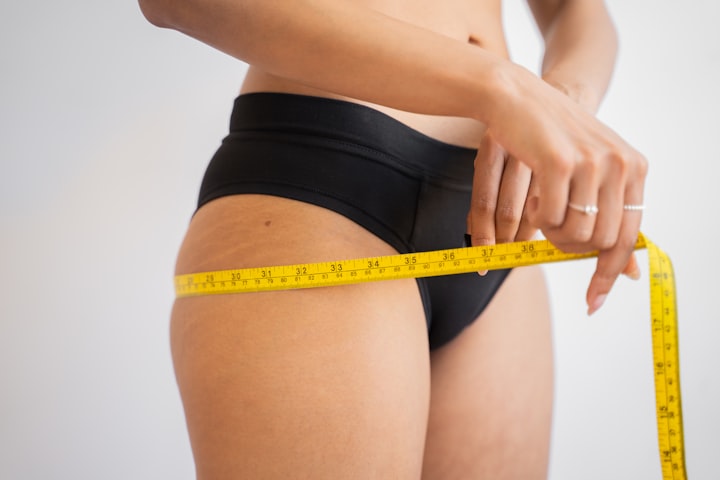Do you want to lose fat or overall weight?
Here are the differences between weight loss and fat loss.
Many people have a common goal of losing weight. However, most average people are unaware of where to start, and what to do to reach their goals. This is how many also end up confusing overall weight loss with fat loss, working hard towards one goal, and ending up with unsatisfactory results. It is important to understand that reaching your fitness goals without having a solid understanding of how they work is difficult. This can lead to unhealthy habits like yoyo dieting, which will only set you back. Based on my personal experience and research done at Skinly Aesthetics, these are the tips I have found on how to effectively lose fat, and a few factors that you should consider.
What is the difference between fat loss and weight loss?
Although weight loss and fat loss are closely related, they differ in that fat loss refers to the body's fat and does not necessarily correlate with your weight on the scale. Overall weight loss, however, is specific to your overall body weight in numbers. If you are looking to have a more defined and toned body, then overall weight loss should not be your primary goal. Instead, you should be focusing on lowering your body fat percentage.
- Weight loss refers to a general reduction in the number on the scale.
- Fat loss refers to the decrease in your body fat percentage
You should focus on one or the other, or both in combination, depending on your desired outcome.
What is the body fat percentage?
There are several ways to measure your body fat percentage (BFP). Some methods are more precise than others, but the goal is to lower your BFP. You can track your progress by measuring it under the same conditions each time. The best time to measure your BFP is in the morning before having consumed anything to eat or drink. These are the most common methods of measuring body fat percentage:
- Skin fold Calipers (use a caliper to measure thickness of pinchable fat).
- Measuring the circumference (use a measuring device to measure the circumference of different sections of your body).
- DXA (Dual Energy XRay Absorptiometry) XRay scans the body to measure bone density, muscle mass, water, and fat.
- Bioelectrical Impedance Analysis (BIA) sends electric currents through your body using electrodes. It measures bone density, muscle mass, fat, and body water.
How do I reduce my BFP?
Although it is difficult to lose weight, overall weight reduction is much easier than fat loss. This is where the difference between fat loss and weight loss comes into play. You can lose weight by creating a calorie deficit. A calorie deficit can be created by cutting down on calories and engaging in cardiovascular exercises like running or biking. To figure out how many calories to consume, you need to determine your basal metabolic rate (BMR). This is the amount of calories that you burn by being alive (before adding walking, exercising or other daily activities). Online calculators make it easy to calculate your BMR. You can also use the following formulas:
Men: BMR = 88.1622 + (13.397x weight in kilograms) + (4.799x height in cm - (5.677x age in years).
Women: BMR = 447.593 + (9.247x weight in kilograms) + (3.098x height in cm - (4.330x age in years).
Once you know your BMR, you can limit the amount of calories you eat. For a caloric deficit you can either reduce the amount of calories you consume by 200 or 500 or exercise and track the amount of calories you burn in the process. You will need to do more than lose weight to lower your BFP. General weight loss can lead to a loss of both fat and muscles. You may be leaner, however, you will ot have any muscle definition. Lifting weights will help you lower your BFP. This will not only build muscle mass and give you more definition but will help lower your BFP. Your body will have a higher percentage of muscle mass while your body fat percentage will decrease. The main takeaway is to gain muscle and reduce body fat.
Spot reduction doesn't work
It would be great to lose fat in specific areas, but this cannot be done without medical intervention. Focusing on fat loss through exercise and diet alone will result in a reduction of fat in all areas, not just certain ones. Fortunately, there are some medical grade treatments that can allow you to eliminate fat in specific areas, or enhance muscles in certain regions of the body. Medical experts confirm that these treatments are effective in reducing the amount of fat you have in the treated areas.
Cardio and weights to lose fat and look good
You may need to do cardio or weight training depending on what look you are trying to achieve. You will need to include weight lifting to increase your muscle definition. Two main methods to strengthen your muscles are:
- Medium weight and high repetitions (12-15 reps) will increase your size and maintain your pump.
- A low repetition (5-8 reps) and a heavy weight result in greater strength and muscle density than the size.
Cardio is better for those who are trying to reduce their caloric intake, but you can also make use of weights to your advantage. More muscle means you will burn more calories and increase your metabolism.
Fat loss can be a lot simpler than you might think, depending on your overall goals. It is important to know what your goals are. Are you looking to lose weight? Or do you want less fat? You may only need to focus on certain areas. In this case, weight training can help you add a definition. You can also go to your local medspa to reduce the fat in the areas you desire with the help of CoolSculpting - a revolutionary fat-freezing technique that removes fat without surgery. You can achieve your weight loss goals by creating a caloric surplus. This will help you lose weight and lower the number on the scale.






Comments
There are no comments for this story
Be the first to respond and start the conversation.